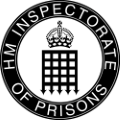Why HMI Prisons is proposing to stop making recommendations
When I first became a head teacher, my school was in a troubled state. Some established staff members had just left, the children were anxious and physical restraint had become the first rather than the last resort. There were many things that needed to be fixed, but I knew that if we did not get the basics right, we would never make progress. For the first six months I had three main priorities: find and recruit effective staff, keep the children in the classroom (they were in the habit of jumping over the fence) and rigorously enforce our behaviour management policy, establishing clear expectations and making sure that rewards and sanctions were consistently applied.
While schools and prisons are not the same, there are some common principles for leaders who are trying to improve or transform an institution. One of the most important is not trying to do too much at once. Leaders who try to solve every problem straight away are likely to solve none of them. They will spread their time too thinly in too many areas and will only be able to pay superficial attention to each issue, leaving their staff confused, overwhelmed and exhausted.
That is why, in recent years, HMI Prisons has reduced the overall number of recommendations in its reports from more than 150 to nearer 30, with a distinction between the recommendations that come from a key concern, and general recommendations to solve less urgent problems. But now we think we need to go further.
Currently, in response to our reports, governors must come up with an action plan that explains how they will deal with each of the recommendations. This process can create a blizzard of paperwork for both the prison and the prison service and can distract governors from getting on with the actual job. Our recommendations are fed into a long list to which the prison must respond, including those from the Independent Monitoring Board (IMB), the Prison and Probation Ombudsman (PPO) and the prison service’s own internal monitoring.
There is a temptation for leaders to concentrate on the recommendations that are easiest to achieve, rather than those which address the most complex key concerns. The distinction that we make between the importance of different recommendations – those that will do most to improve prisoner outcomes – appears to have been lost, with the focus instead on the number of recommendations achieved as the measure of success.
Last year we introduced a self-assessment report (SAR) for governors as part of our focus on leadership. In the SAR we expect them to assess their establishment against our four healthy prison tests and to list no more than six main priorities. The number of priorities is low because we know that, with limited time and resources, their focus should be on the things that matter most, particularly in prisons that are in challenging circumstances. Governors have quite reasonably asked why, if we expect them to have no more than six priorities, do we make so many recommendations?
There is also an inherent difficulty in making a single, static recommendation to solve what are often complex problems. For example, where inspectors raise a concern that violence is too high on a particular wing, the reasons for this and the subsequent solutions may be multifaceted, such as staff-prisoner relationships, the regime, the mix of prisoners, a lack of incentives, the condition of the accommodation or the quality of leadership.
We are proposing that inspection reports will no longer include recommendations but will instead report up to 15 concerns from which inspectors will select up to six (but usually around three) priority concerns. Priority concerns will be those areas that we believe should be given the most urgent attention by prison leaders. If an independent review of progress (IRP) takes place at a prison, inspectors will focus mainly on the progress the prison has made against priority concerns when we return to the jail within a year.
Each concern will be set out clearly and succinctly at the beginning of each report, with more details contained in the main text. We will still expect the prison to create an action plan which responds to our concerns.
There will be other areas prisons need to improve, but which do not reach the threshold of concerns or priority concerns. This does not mean that they are trivial or can be ignored by the prison – they will be described in the main report and inspectors will assess progress against them as part of their healthy prison assessments at the next inspection.
Since I became Chief Inspector in 2020, I have made the quality of leadership in prisons my particular focus. By moving away from making recommendations, HMI Prisons is raising its expectations of prison leaders. We will point out what needs to be fixed, but it is for governors, directors and their teams to use their knowledge and expertise to find the solutions.
